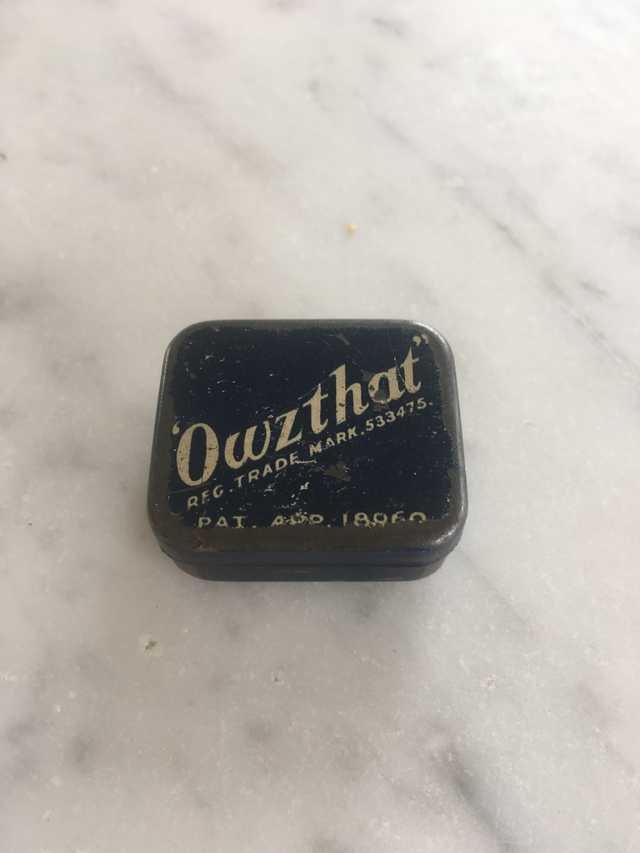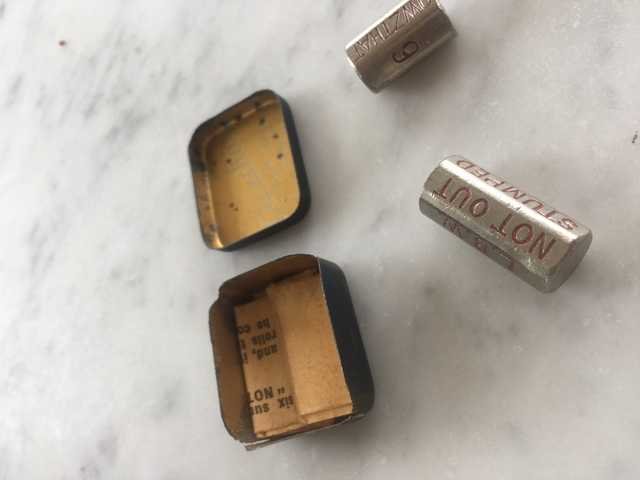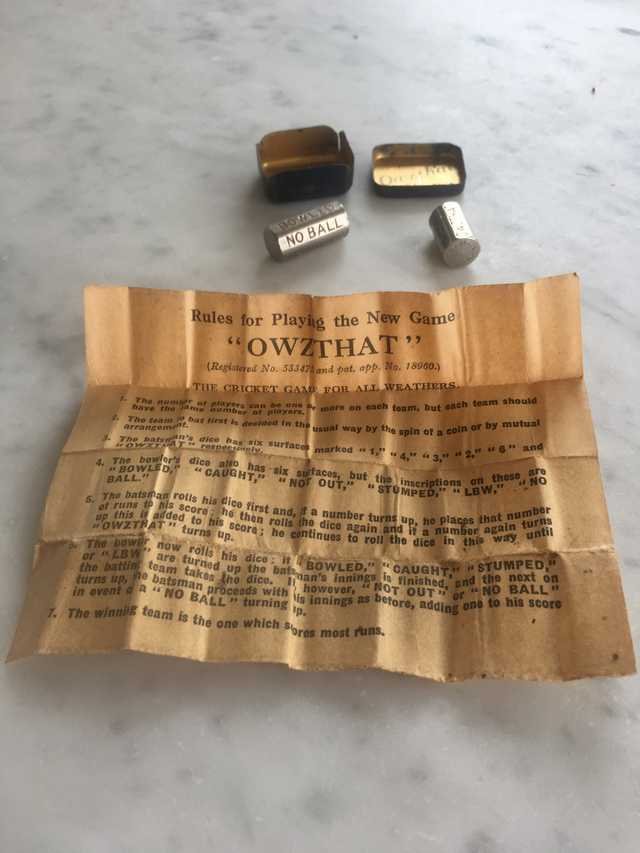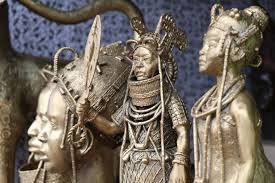Last week I attended a four-day professional learning program completely different from any other. The program’s ultimate mission was to empower educators to improve educational outcomes for Aboriginal students. This in itself doesn’t sound that different from lots of other professional learning. It was the process (or journey) that they took us on that was so powerful. All of the people who participated last week gave a lot of themselves. I’m not the type of person that talks about their emotions or feelings much so I didn’t open as much as most the other participants but I did give more of myself away than I’m used to.
Artefact sharing
For day two, we were asked to bring an artefact to share with the group. The artefact needed to have a special significance to the sharer, and I suppose there needed to be a story behind its significance. There were 20 or so people involved and the facilitators also shared their artefact so the process took quite a while.
Owzthat
WARNING - although I have tried to avoid it, there is some cricket terminology in this post - SORRY!

The little tin box

What’s in the box?

This is!
I chose this little game called ‘Owzthat’ for the story that goes with it. The game consists of a small tin box, about 1.5 cms x 2 cms. Inside the box are two heavy metal hexagonal prisms and a single piece of paper that contains the rules to the game. The hexagonal prism with the numbers 1,2,3,4,6 and ‘Owzthat’ on them are rolled. Each roll is recorded as runs to the batting team. If ‘Owzthat’ is rolled, the second hexagonal prism is then rolled. This determines whether or not the batter is out and what the mode of dismissal is.
The name ‘Owzthat’ refers to the act of appealing in cricket. When a bowler thinks he or she has dismissed the batter but the decision is not clear-cut, they ‘appeal’ to the umpire by calling out ‘Owzthat’ - really they are saying ‘How’s that?’ but it has evolved into this slang. The umpire then decides whether or not they think it is out (out or not-out).
The story
I have three older ‘half’ siblings - half because they are my dad’s children from his first marriage. These siblings never lived with us full-time - they lived with their mother, but they did come to stay every other weekend. So I consider myself an only child.
My oldest brother is 13 years older than me. He is a real cricket fanatic, especially so in his teenage years. In Australia, there is a lot of cricket on TV through the summer. It lasts all day. Some people love it, some people hate it. As a young boy I enjoyed playing backyard cricket but I never really understood the appeal of sitting down for hours watching the game being played on TV. One day when my brother was watching the cricket on TV (this was during the 1987-88 season so I would have been eight years old) something caught my attention, so I started asking questions. The hardest thing to come to terms with as a new cricket watcher is learning the technical terminology specific to the game used by the commentators. The next day I turned the TV on to watch cricket of my own volition. I was actually enjoying learning more about the game. After that day, one thing led to another (and another and another ... you get the idea!) and I became cricket MAD - obsessed. I lived, breathed and slept cricket.
Being an only child, you learn to be creative in the ways you keep yourself occupied. My brother taught me a cricket game that he played with dice that really appealed to me. The premise was that the number you rolled was the number of runs the batter scored. If you’re not familiar with cricket - a 6-sided dice is ideal. 6 is the maximum number of runs a batter can score for one hit - a batter scores 6 if they hit it over the boundary ‘on the full’. 4 is scored if the ball reaches the boundary (not on the full). 1, 2 and 3 are scored if the ball does not reach the boundary and the batters run up and down the wickets before the ball is thrown back to the stumps by the fielders. 5 is almost never scored - so, getting back to the dice cricket game - 5 is the ideal number to use for an appeal for a batter to be dismissed. So in this game if you roll two 5s consecutively the batter is ‘out’ - the dice is then roll again to determine the type of dismissal (bowled, caught, caught behind, run out, LBW, stumped). So with a double 5 - the chance of rolling that is 1:36, which is not quite consistent with the average rate a dismissal happens in most forms of the game but is much better than the dismissal rate of ‘Owzthat’. Of course, you could build upon the existing rules by optimising them to make the game play out like a real test match or one-day international (which of course I did!). One way to optimise the dismissals could have been double 5 followed by a 4, 5 or 6 - so that would make it 1:72 chance which is probably roughly in line with the dismissal rate in test matches (the ultimate form of cricket).
The real fun I got out of this game was the scoring - you could pick your teams, and record it the official way a scorer would score, including the bowler’s figures and the rotating of the strike. Another great thing about this is that because it’s a game of chance, neither team is controlled by me, so I just hand control over to the dice. Of course, I always ended up cheering for one team or the other.
Years later, I was reading a book called ‘Fatty batter’ by Michael Simkins. I absolutely loved this book because it’s about a normal guy who became cricket-obsessed - a ‘next-level’ obsession. Only a real cricket tragic can identify with this. It goes beyond a hobby or interest. It is completely self-consuming. In this book, Simkins talks about a game called ‘Owzthat’ that bears a striking resemblance to the game my brother taught me as a young boy. Around the time I was reading the book, I was browsing in an antique shop and came across this artefact. It was just one of those things - time and place. This was something I just had to have!
Nowadays I’m not as big of a cricket tragic as I was up until my mid-20s, but I still love the game.
TLDR: I chose this artefact because it is a symbol for my cricket obsession and growing up as an only child, two important parts of my identity.
So, if you’ve got to the end of this post and found it interesting, perhaps you could consider writing a post about an artefact that has special significance to you. I would love to read more of these.
Posted using Partiko iOS
Cool I never new that Owzthat game existed.
Posted using Partiko Android
Downvoting a post can decrease pending rewards and make it less visible. Common reasons:
Submit
Beautiful artefacts we have here!!
If I was opportuned to be there, I would have presented this beautiful bronze bust from Benin Kingdom, Nigeria. It dated back to a millennial..jpeg)
Downvoting a post can decrease pending rewards and make it less visible. Common reasons:
Submit
Thanks for sharing.
Posted using Partiko iOS
Downvoting a post can decrease pending rewards and make it less visible. Common reasons:
Submit